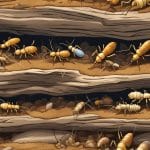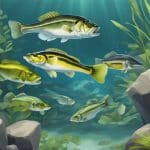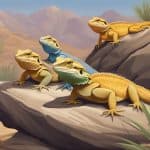Types Of Worms
Learn about the Types of Worms. Worms are the elongated, thin bodied creatures that belong to the class of non-arthropod invertebrate animals. Their thin bodies suit their lifestyle perfectly: they live either in some marine organisms, flat planes, underground or in the bodies of other animals. There are various types of worms: some are the simple slither-dither worms that we see occasionally, some are amphibians or reptiles while the others are simply insect larvae. They are classifies into three types:
Annelida
Annelida family of worms is also called segmented worms because their trunk is divided into tiny rings or circular segments which are visible in close inspection. These types of worms are especially common as they include the earthworms that we are well aware of. Earthworms themselves; however, are a very broad term, for they comprise up to 16 other categories. Annelida also contains a class called Oligochaetes which are recognized by bristles like rough hair in their segments. The bristles are called as setae. Setae, in some worms, are long and curled while in others, almost invisible. They are used for grip when the worms crawl along surfaces or wiggle beneath the rocks. Oligochaetes are transparent. Moreover, earthworms are further roughly classified according to their habitats. That is, Epigeic worms are the types of worms that live above the ground, Endogenic live below the ground but much closer to it, while Anecic are the types of worms that live deep under the ground. Earthworms are very interesting organisms: they do not have eyes or ears or mouth. They feed by taking in soil via their first segment by a very high pressure suctions force that is because of their specially built muscular pharyngeal in their segment. Furthermore, they do not require eyes or ears as they have especial sensory detecting bodies that detect the tiniest of vibrations.
Nematoda
These types of worms include threadworms, roundworms and hookworms. They are recognized by their curvy, almost S shapes, shiny slinky bodies. Their skin is tough and flexible; however this cannot be said for all of the Nematoda family. They are found in all sorts of places imaginable: pets, humans, damp places, tropical areas, planes etc. Roundworms or parasites, belong to the Nematoda family and are found in human skins. Threadworms, also from the family of Nematoda, are types of worms found in the decaying objects, soggy soil and other damp conditions such as marshes and topical areas. Moreover, they are present in oceans, rivers, ponds, and all sorts of waters. Hookworms are parasites that develop within other organisms and foster by the food in their bearer’s intestines. It is interesting to note that Nematodas are very simple organisms which develop in 4 days maximum.
Platyhelminthes
The members of Platyhelminthes are types of worms that are flat-shaped (also referred to as leaf-shaped) or they bear their contours to a ribbon. Their structure is no more distinct; the bodies of Platyhelminthes are covered with rough hair that is apparent under microscopic observation. These hair (called cilia) help their movement. They have a pair of eyes (unlike the earthworms) or a single eye and a very simply biological structure. These types of worms include tapeworms and flatworms.






